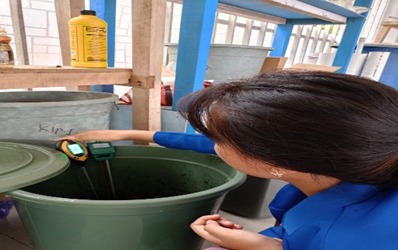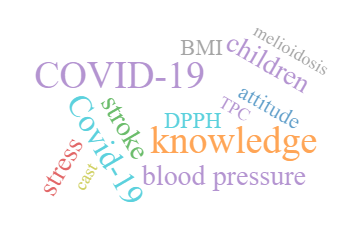Efektivitas Kombinasi Mikroorganisme Lokal (Mol) Nasi Basi Dan Kulit Pisang Kepok (Musa Acuminata) Sebagai Aktivator Pembuatan Kompos
Abstract
Indonesia produced 67.8 million tons of waste in 2020. 37.3% of the waste in Indonesia originated from household activities. The waste production in Mamuju itself is approximately 1.6 tons per day and is predominantly household waste. Objective: to determine the effectiveness of the combination of local microorganisms (MOL) from spoiled rice and the skin of kepok banana (Musa acuminata) as activators for compost production. Method: This research employed a pure experimental research design. The research was conducted in June 2023 at the Environmental Health Department workshop of Poltekkes Mamuju. Observations of temperature, pH, moisture content, color, and odor were carried out over a 7-day period. A 500-gram sample of waste was used for each treatment. MOL concentrations tested were 250 ml, 500 ml, and 1000 ml with a 1:1 ratio of spoiled rice and banana skin. The control treatment was given EM4 as a bioactivator. Results: The treatment with 250ml MOL concentration showed a final pH of 7, black color resembling soil, 21% moisture content, a temperature of 30⁰C, and an odor resembling soil. The treatmentwith 500ml MOL concentration exhibited a final pH of 7, black color resembling soil, 23% moisture content, a temperature of 29⁰C, and an odor resembling soil. The treatment with 1000ml MOL concentration displayed a final pH of 7, black color resembling soil, 21% moisture content, a temperature of 30⁰C, and an odor resembling
soil. Meanwhile, the treatment using EM4 took 9 days to produce mature compost, with a final pH of 7, black color resembling soil, 22% moisture content, a temperature of 30⁰C, and an odor resembling soil. Conclusion: The use of a combination of MOL from spoiled rice and kepok banana skin is more effective in accelerating composting compared to EM4. It is recommended for further research to use a larger volume of waste and to measure the C/N ratio.














